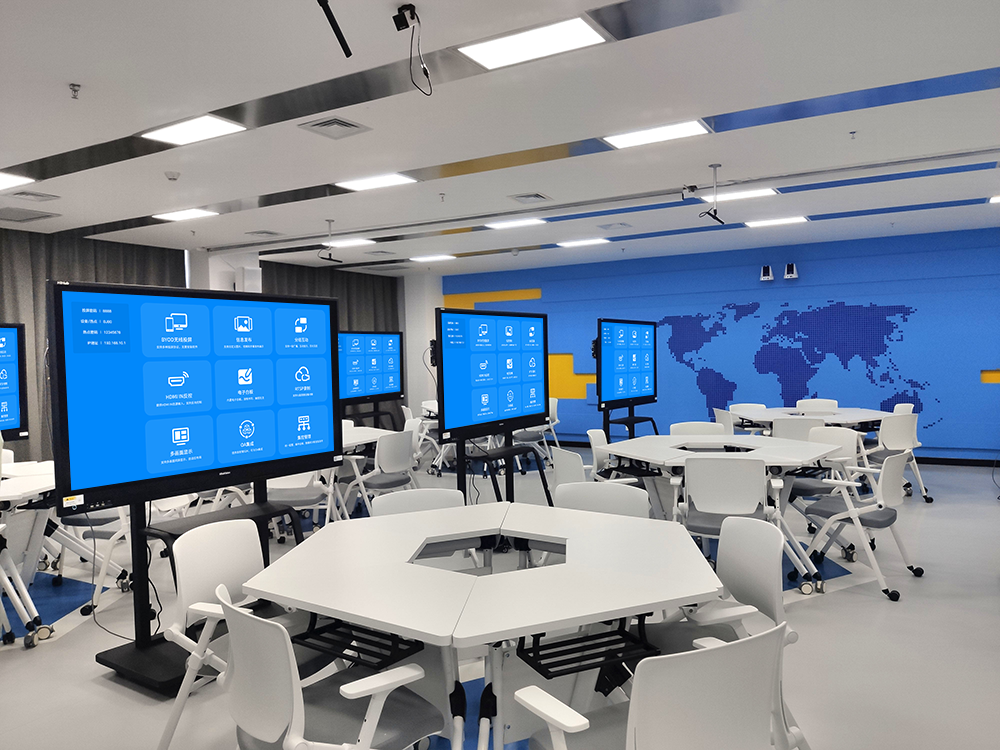Multi-Screen Collaboration Is More Than Mirroring: Creative Uses of “Extended Mode” in Smart Classrooms
Many people think multi-screen collaboration is simply “copying” content from a small screen to a large one. This is just its basic function. In advanced smart classroom applications, “Extended Mode” is the secret weapon to enhance teaching efficiency and professionalism.
What is “Extended Mode”?
It turns the large screen (interactive teaching display) into a second monitor for your computer or tablet. The two screens can show different content, greatly expanding your digital workspace.
Creative Uses of Extended Mode in Smart Classrooms
- Teachers’ “Teleprompter” Mode: Teachers can cast the PPT slideshow to the main screen for students, while viewing lesson notes, controlling timers, or previewing the next page’s animation on their computer or tablet’s secondary screen. This makes the teaching process smooth and seamless.
- Students’ “Multi-Task” Collaboration: When working on group projects, student teams can use the main screen for final result presentations and the secondary screen for data research and content editing, achieving efficient multi-screen collaboration.
Value of Extended Mode in Meeting Presentations
- Presenters’ Professional Tool: During reports, set the large screen to slideshow mode and keep the speaker notes visible on your own computer. This allows you to take control of the presentation with confidence.
- Data Comparison and Analysis: Process raw data on the main screen and simultaneously generate visual charts on the extended large screen. This ensures clear logic and strong persuasiveness.
How to Enable Extended Mode?
- Windows/Mac Computers: After successful wireless mirroring, press Win+P (for Windows) or go to System Preferences – Displays (for Mac), then select “Extend”.
- Advanced Tablet Mode: Some tablets with powerful multi-screen collaboration features (e.g., Huawei, Samsung) will automatically enter a computer-like desktop extended environment after connection.
Mastering the “Extended Mode” of screen mirroring is a key step from being a technology user to a smart classroom designer. It can greatly improve the professionalism and fluency of teaching and presentations.
